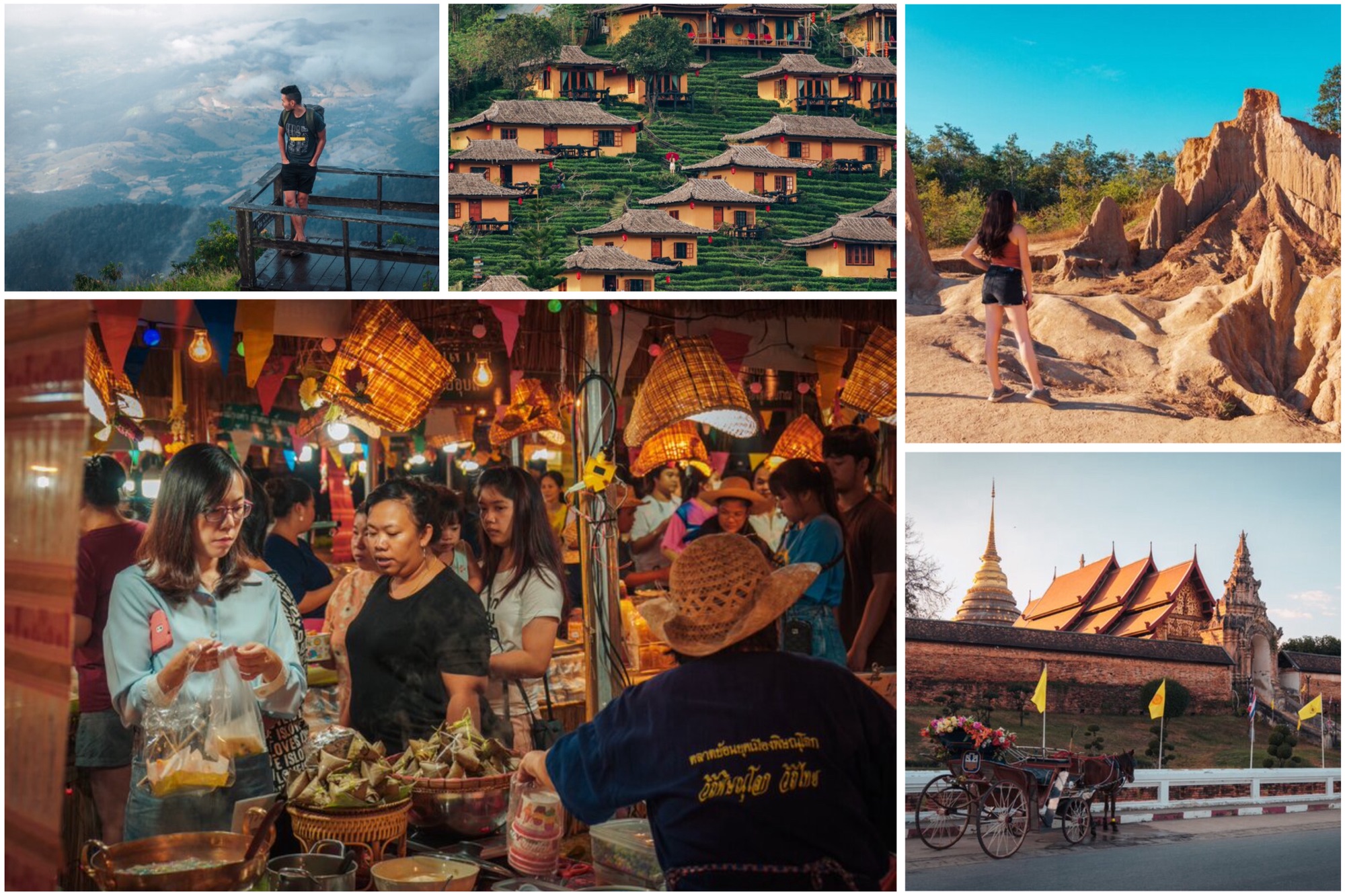Northern Thailand is a treasure trove of the country’s most magnificent natural attractions. Steeped in the traditions of the ancient Lanna Kingdom, unique to this region, it also boasts an unparalleled culinary scene rich in variety and passion. With its breathtaking landscapes, fascinating cultural heritage, and culinary delights, it offers an irresistible appeal.
For those looking to venture beyond Thailand’s well-trodden tourist paths, Northern Thailand deserves your full attention. However, with over 17 provinces to choose from, deciding where to go can be challenging. This is why I’ve created this guide.
In this article, you’ll find a curated list of the top 10 destinations in Northern Thailand, based on my personal travels across these provinces, perfect for those eager to dive into Thailand’s unique culture.
So, without further ado, let’s explore the premier destinations Northern Thailand has to offer, as shown on the map below:
10. Phitsanulok
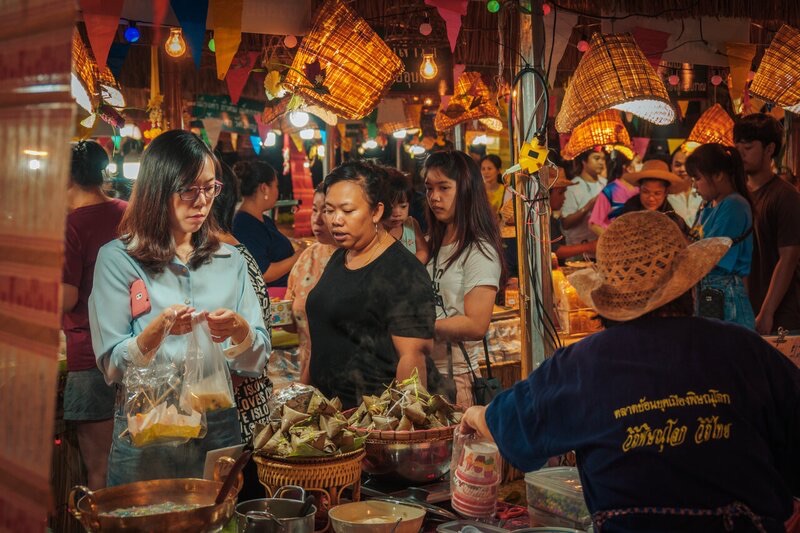
Phitsanulok, with a history spanning 600 years and a population of 800,000, is located along the Nan River in Thailand’s lower northern region. Although it might not be a common stop on typical travel itineraries, Phitsanulok is a hidden gem for those looking to experience authentic Thailand beyond the tourist trail. The city provides a genuine glimpse into Thai daily life, far removed from the metropolitan hustle of Bangkok or the tourist-centric atmosphere of Chiang Mai and Phuket. For an unfiltered look at true Thai culture, Phitsanulok is an unparalleled destination.
Phitsanulok’s rich history is evident in its numerous historical landmarks, such as the renowned Wat Phra Si Rattana Mahathat. This temple houses the Phra Phuttha Chinnarat, one of Thailand’s most revered and exquisite Buddha statues, standing for over 700 years—a testament to its enduring legacy. Additionally, Phitsanulok is home to ancient temples and pagodas, including the 15th-century ruins of Wat Wihan Thong. The Chan Royal Historical Center also provides insights into the city’s significant historical contributions. To fully appreciate Phitsanulok’s heritage, a stay of 2-3 nights is recommended, allowing for a comprehensive exploration of this gateway to Northern Thailand’s wonders.
9. Sukhothai
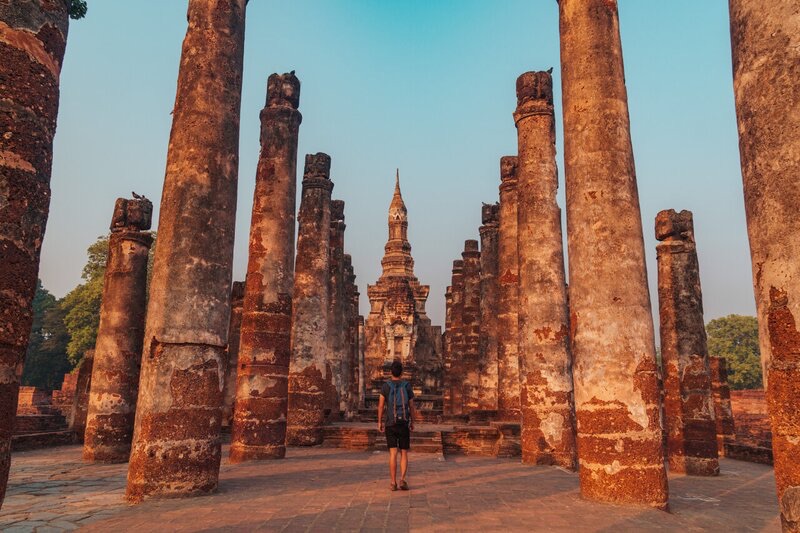
Sukhothai, though modest in size today, holds immense historical significance as the site of Siam’s first capital in the 13th century, established by the revered King Ramkhamhaeng. It is celebrated as the birthplace of Thai culture, where the nation’s traditional art and architectural motifs began. For those interested in exploring the origins of Thai history, Sukhothai is unmatched.
Sukhothai Historical Park in Sukhothai is a vast area where visitors can cycle among numerous ancient structures from the 13th century, providing a glimpse into the bygone era of the Sukhothai Kingdom. The park’s crown jewel, Wat Maha That, is the largest and most significant temple complex, while the towering 15-meter Buddha statue at Wat Si Chum stands as a majestic testament to the region’s historical grandeur. The park’s collection of ancient sites is truly a marvel to behold.
8. Lampang
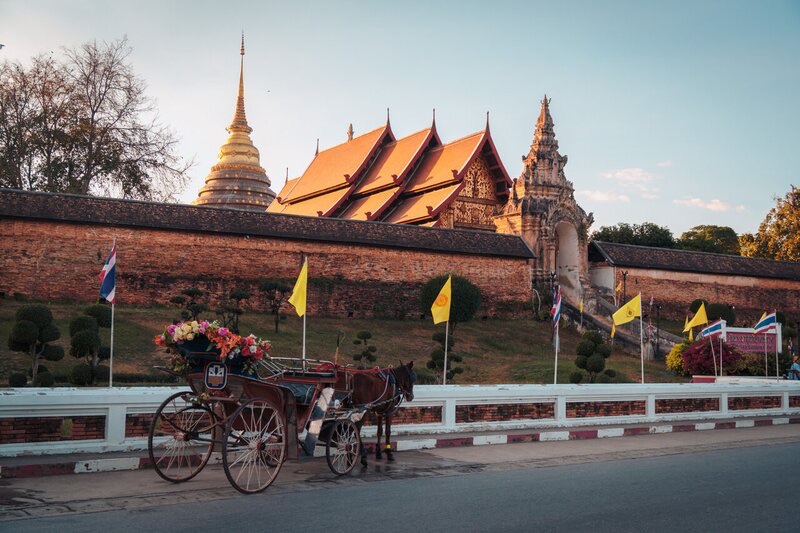
While Bangkok and Chiang Mai are popular destinations in Thailand, it’s the lesser-known, tranquil spots like Lampang that often leave a lasting impression. Lampang serves as a gateway to the Lanna Kingdom, and as you travel north from Bangkok, you’ll notice a gradual change in architectural styles. The buildings transition from the modern designs of Central Thailand to the traditional, teakwood structures with Burmese influences typical of Northern Thailand. These less prominent locations frequently become the most memorable parts of a traveler’s journey.
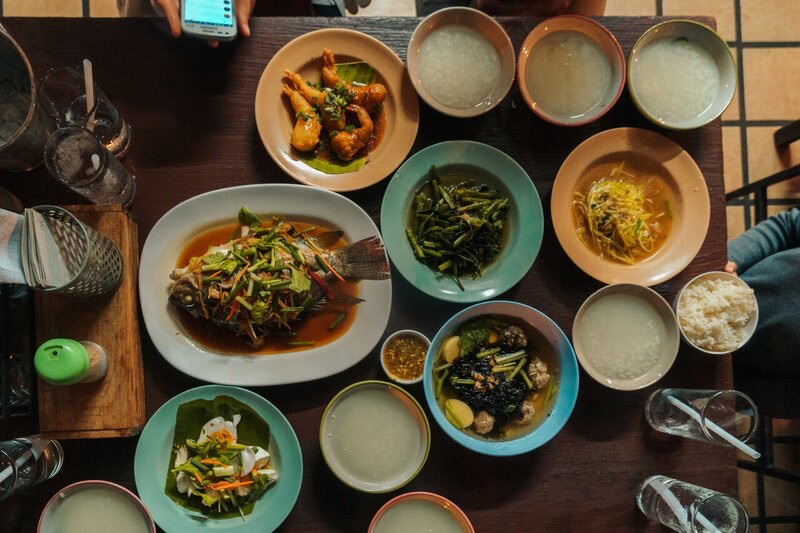
Lampang’s attractions beautifully reflect its history and Lanna heritage. Wat Si Rongmuang, an all-teak temple built by a Shan settler from Myanmar, and Baan Louise, a former residence turned museum that once housed Louise T. Leonowens’ teak enterprise, are testaments to its forestry legacy. Additionally, Lampang features the breathtaking Wat Chaloem Phra Kiat, known as the ‘temple in the sky,’ with its white pagodas perched atop the rugged peaks of a limestone mountain, creating one of the region’s most picturesque scenes.
Lampang provides a peaceful escape from the busy tourist hubs like Chiang Mai, allowing for a relaxed exploration of its beautiful sights by bike or horse cart. To fully appreciate its charm, it’s recommended to spend 2-3 nights in Lampang.
7. Phrae
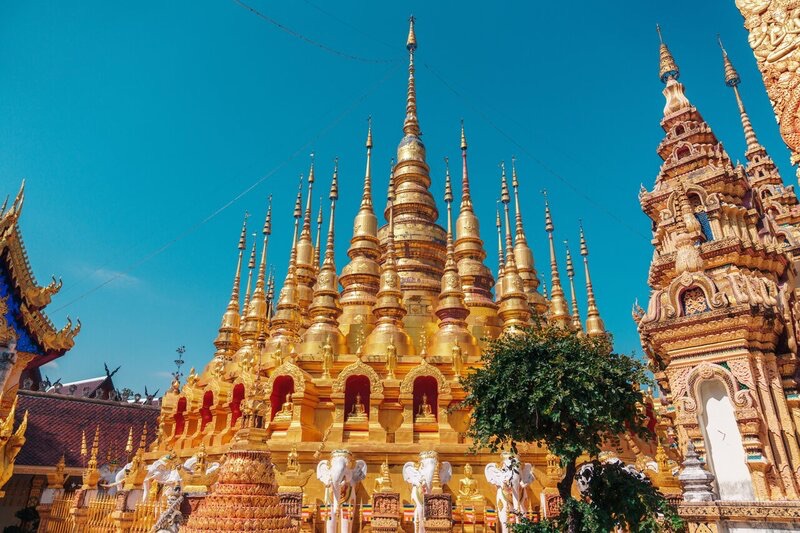
Once a bustling center of the teak trade, Phrae now quietly resides on the outskirts of the former Lanna Kingdom, with its rich history often overlooked. While many travelers merely pass through on their way to the more popular Nan, they often miss the vast stretches of untouched wilderness and the numerous hidden gems that Phrae has to offer.
Phrae is a place where tradition and nature beautifully converge. The Pae Muang Pee Forest Park allows visitors to explore its unique rock formations, while Mae Yom National Park is filled with hidden natural wonders. The city itself is rich in history, featuring ancient teak wood homes from Phrae’s last sovereign. To fully appreciate Phrae’s offerings, including its splendid teak wood temples, museums, and the natural beauty of its pristine mountains, plan to stay for at least two nights.
6. Phayao

Phayao, a province in Northern Thailand, might not be a typical stop for travelers, but it’s brimming with surprises! Over a 3-day visit, you can discover many stunning, lesser-known spots. Phayao exudes a charm akin to the picturesque lakeside towns of Europe. The vast Kwan Phayao, an artificial lake created by dam construction in recent decades, has turned the city into a scenic marvel, making it one of Thailand’s most photogenic locations.
Situated on the eastern shore, Phayao City boasts one of the most breathtaking sunset views over Phayao Lake in Northern Thailand. It’s a cherished tradition for residents to gather by the lake each evening to enjoy the day’s last light. As night falls, the area becomes a lively pedestrian zone, perfect for browsing shops and savoring local street food.
Phayao City may charm visitors, but the true allure lies in the ethereal beauty of Phu Langka at dawn. Phu Langka is undoubtedly a treasured highlight of Phayao. The enchanting landscape, especially at sunrise, is simply mesmerizing. While a daytime visit offers pleasant views, it’s the sunrise spectacle—when low-hanging clouds cascade down the mountains into the rice fields—that unveils the true magic of this place. It’s an unforgettable visual experience.
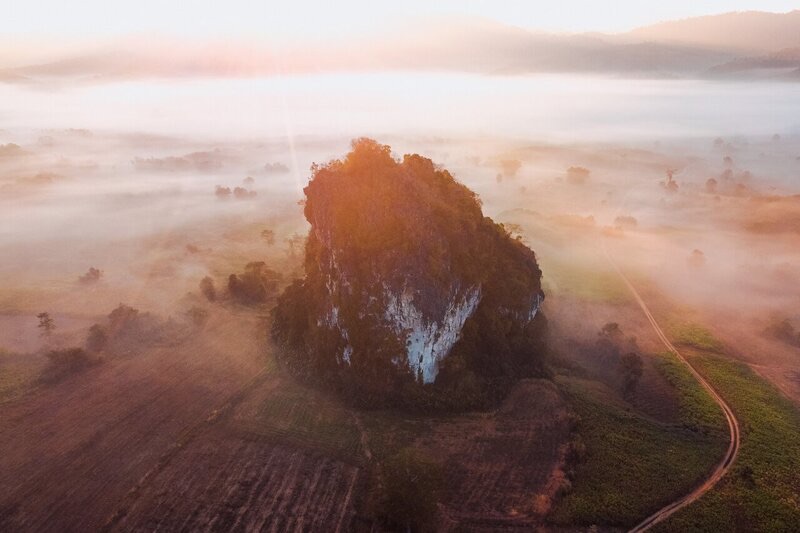
Phayao offers a plethora of activities, and to fully appreciate its attractions, at least 3 days are recommended, including overnight stays in both Phu Langka and Phayao City. Conveniently accessible from Chiang Mai, Phayao is an ideal destination for those seeking a unique travel experience.
5. Nan

Nan is becoming a popular destination among local travelers. It is one of Northern Thailand’s most captivating provinces, with a unique culture, attractions, and natural beauty that rival those of Chiang Mai and Chiang Rai. Historically, Nan was an independent entity known as Nanthaburi for many centuries, remaining isolated until it eventually merged with the neighboring kingdoms of Lanna and Burma.
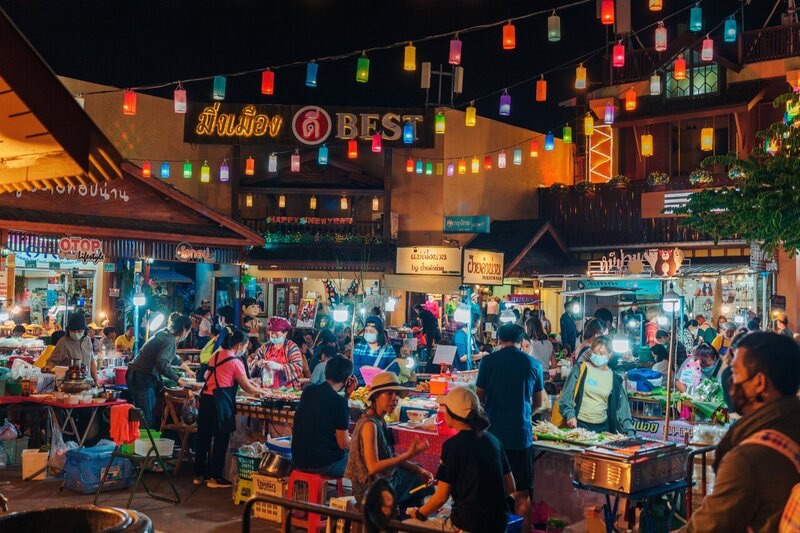
After years of neglect under Burmese rule, Nan regained its independence in the 18th century, becoming a semi-autonomous kingdom within Siam (now Thailand). It wasn’t until 1931 that Nan was fully integrated into Thailand, leading to a cultural and economic revival. Today, Nan’s resurgence reflects its rich history, as it becomes increasingly popular with travelers looking to explore Northern Thailand beyond the well-trodden paths of Chiang Mai.
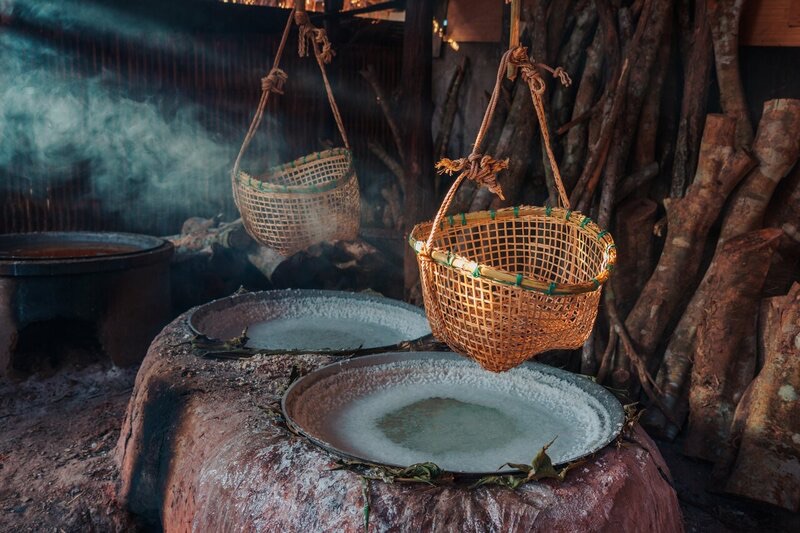
Nan, rich in historical significance, preserves many exquisite relics from its storied past. A prime example is Wat Phumin, a major monument in Nan City, where visitors can admire some of the best-preserved murals from the Nan Kingdom era. These artworks vividly depict the life of Buddha and offer insights into the local lifestyle of that time. Additionally, Nan features its own version of the White Temple, Wat Ming Muang, reminiscent of Chiang Rai’s iconic temples, as well as the splendid Golden Temple of Wat Sri Panthon. Numerous other temples scattered around the city’s outskirts further showcase Nan’s unique architectural heritage.
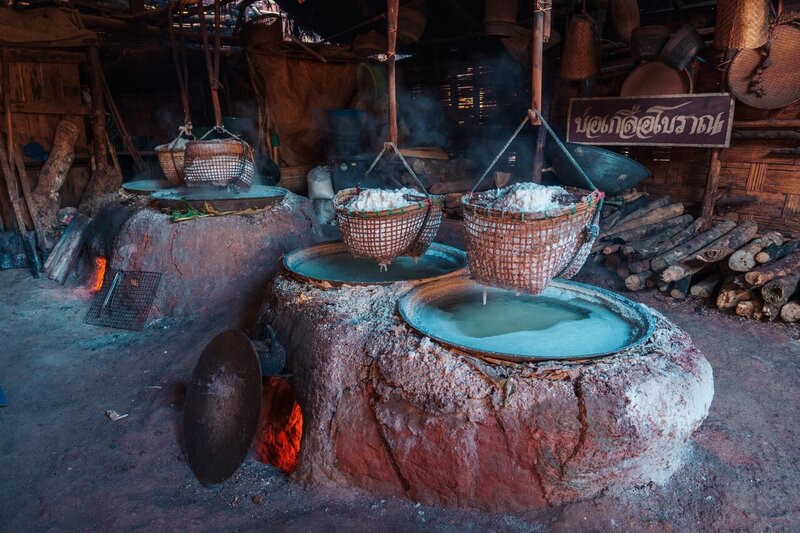
Nan’s Sinthao Salt Pond Village is a uniquely distinctive destination in Thailand. Known for its natural rock salt ponds, the village is home to an ancient community of salt producers who have been harvesting salt for generations. Visitors can wander through the village, step into the rustic wooden huts, and observe the traditional salt extraction techniques that have been preserved over time. This experience is unmatched anywhere else in Thailand.
For astronomy enthusiasts, Nan is an ideal stargazing destination. The bare summit of Doi Samer Dao, a popular camping site, provides a stunning 360° panoramic view, perfect for observing the grandeur of the Milky Way in a way that’s unmatched elsewhere in Thailand.
4. Chiang Rai
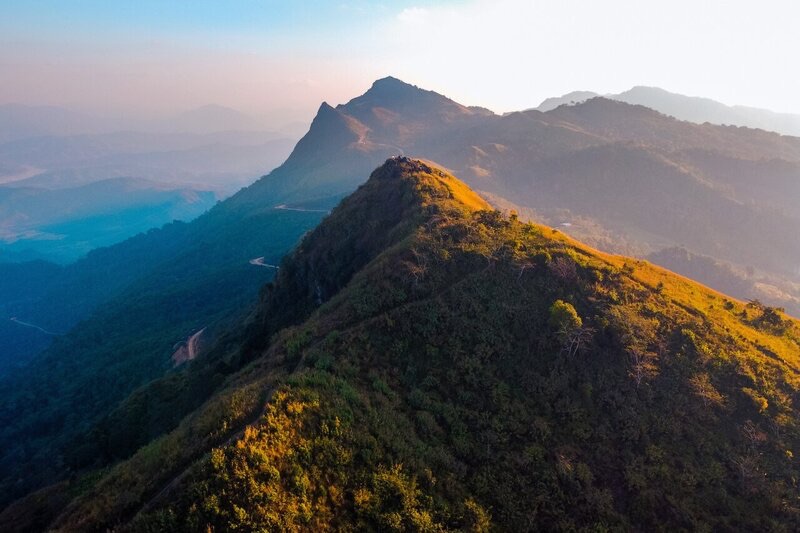
Chiang Rai, often perceived as a tranquil town in Northern Thailand with limited attractions, actually harbors a wealth of hidden gems. Among them is the White Temple, a stunning edifice that stands out as one of the country’s most exquisitely crafted temples. Adorned with elaborate glass sculptures and carvings, all immaculately white, this temple offers a unique visual experience unlike any other.
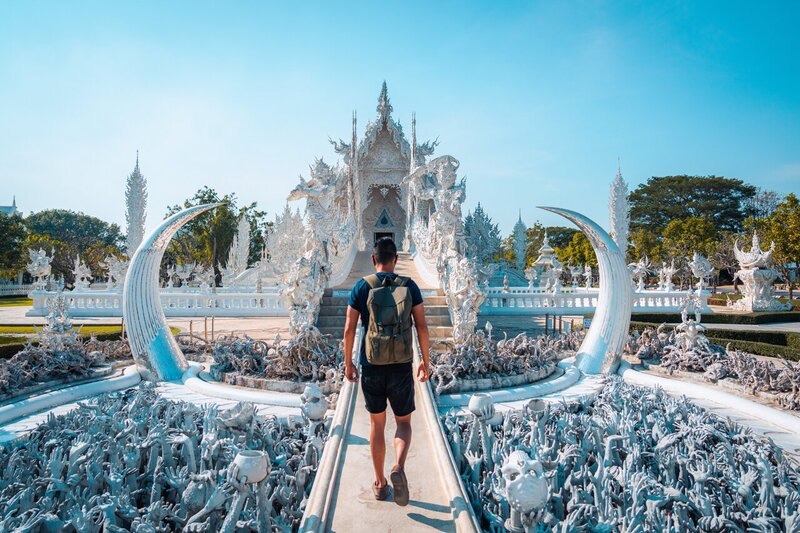
A short distance away lies the Blue Temple, a remarkable structure entirely adorned in blue, and the expansive Wat Huay Pla Kang Chinese temple, which houses the towering Guanyin Statue. Additionally, the vibrant statues at Wat Saeng Kaeo Phothiyan add to the region’s artistic allure. Chiang Rai is not only celebrated for its stunning artistry but also for its historical depth, exemplified by the ancient city of Chiang Saen. Here, one can observe the dynamic intersection of Thailand, Myanmar, and Laos, where the borders of these three nations converge.
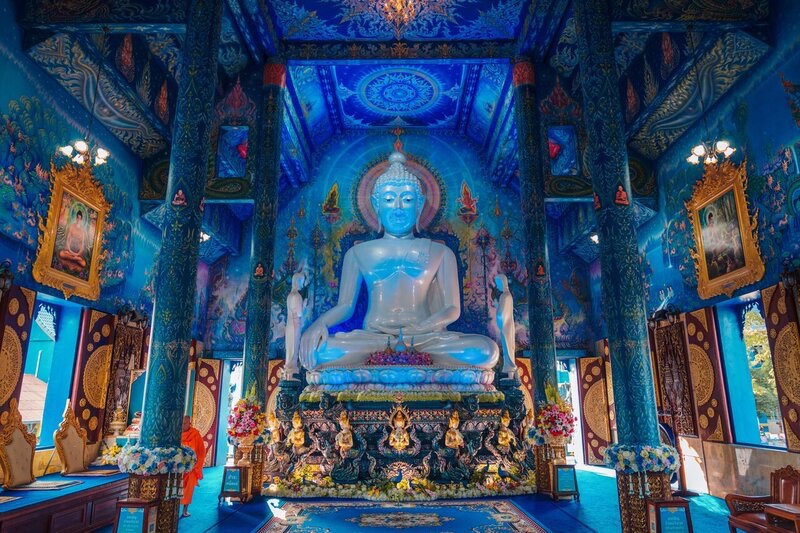
Given its vast expanse and the numerous enchanting locations and vibrant towns to explore, it’s recommended to allocate about 5 days to fully experience Chiang Rai. Although a day trip from Chiang Mai to see the Blue and White Temples is an option, spending more than just one day in Chiang Rai is worthwhile. The region has much more to offer beyond these two temples, promising a more enriching exploration.
3. Mae Hong Son Loop
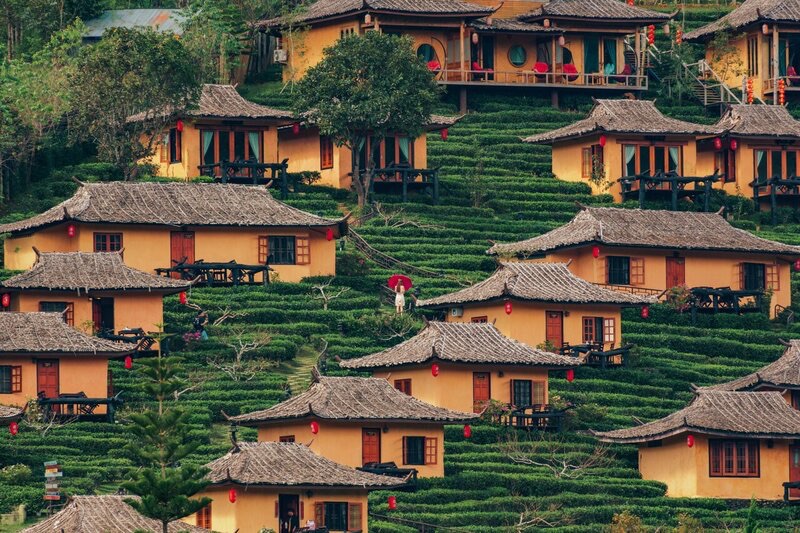
The Mae Hong Son Loop is considered one of Thailand’s best road trips. Starting and ending in Chiang Mai, this 600 km journey circles the remote province of Mae Hong Son, showcasing some of Thailand’s most spectacular landscapes. The route takes you to peaceful spots like Mae Sariang on the banks of the Yuam River and the provincial capital of Mae Hong Son, known for its beautiful Burmese-style temples. You’ll also see the vast Mexican Sunflower Fields, the culturally rich town of Baan Rak Thai with its Chinese heritage, and the popular tourist destination of Pai, all within one circuit.
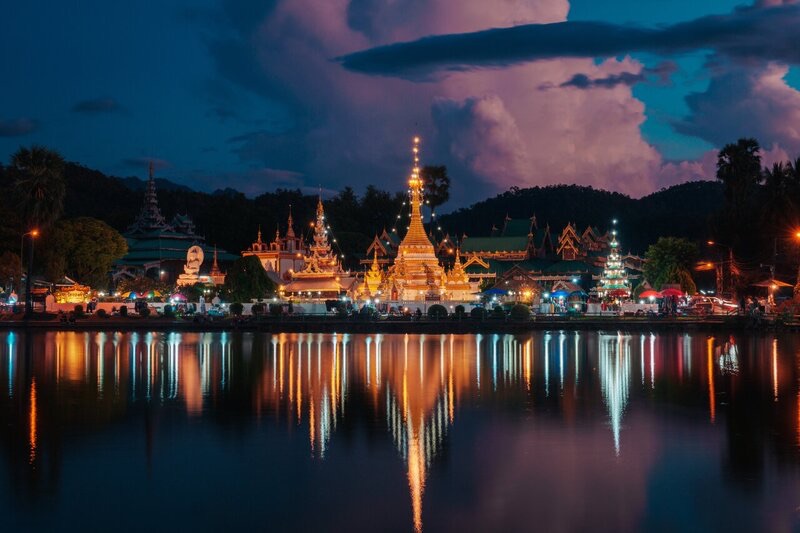
The Mae Hong Son Loop is an adventure filled with numerous activities at each stop and countless detours along the way. Completing this circuit can take anywhere from 3 to 10 days, giving you ample time to fully explore the wonders of this secluded region. Prepare yourself for the challenge of navigating over 1860 curves on this route. For those who succeed, there’s even a t-shirt available at the Mae Hong Son City night market that proudly declares, “I have conquered the 1860 curves of Mae Hong Son,” as a fun memento of the journey.
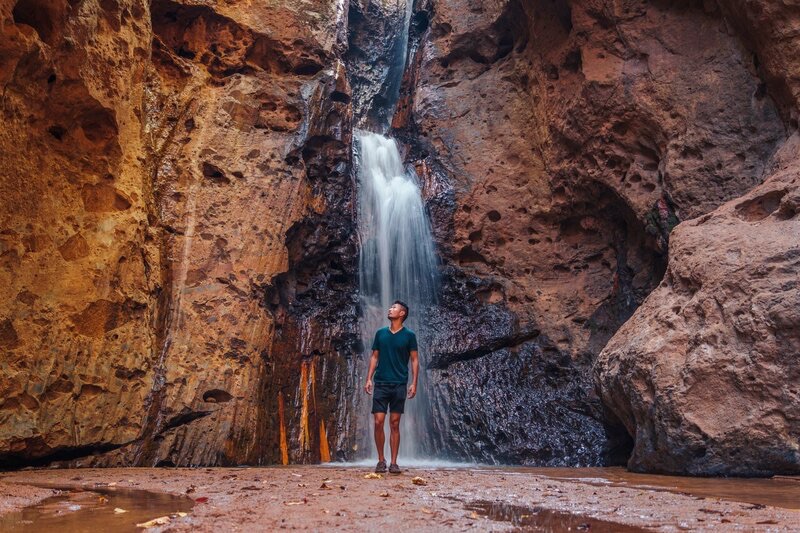
Starting and ending in Chiang Mai, the Mae Hong Son Loop can easily be undertaken by renting a car or motorbike from one of the many rental shops in the city. This enables a relaxed exploration of each point of interest along the loop, one by one.
2. Doi Inthanon

Rising to 2,565 meters (8,415 ft), Doi Inthanon is Thailand’s highest peak and is located relatively close to Chiang Mai. The climate here is unusual for Thailand, providing a refreshing mountain chill and occasional morning frost during the winter season. It would be a missed opportunity not to visit this magnificent mountain while in Northern Thailand.
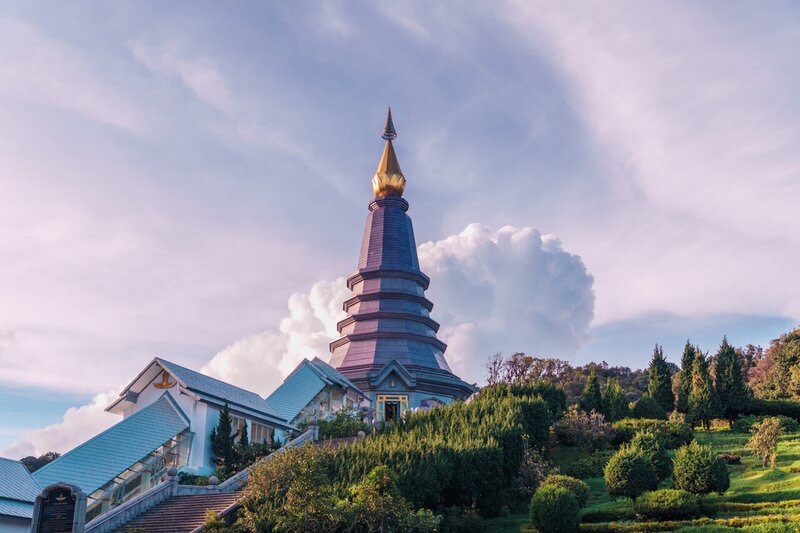
Doi Inthanon National Park boasts some of the most stunning waterfalls in Chiang Mai province, including the magnificent Wachirathan Waterfall and the picturesque Mae Ya Waterfall.
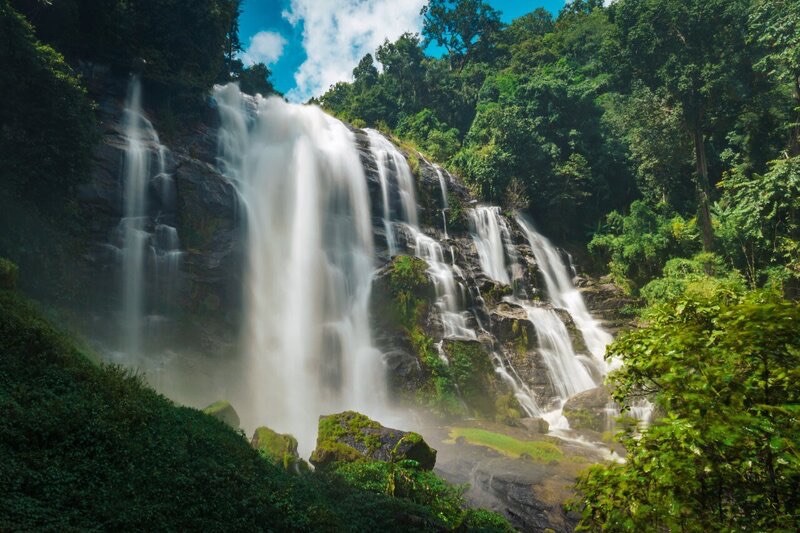
At its summit, Doi Inthanon features several hiking trails, with the Kew Mae Pan trail being one of the best. This trail takes you along the mountain’s ridge, offering a spectacular view of the sea of clouds drifting over the valley below, the highest point in Thailand. The wide range of activities, combined with the area’s stunning beauty and accessibility, make Doi Inthanon a top destination to explore.
1. Chiang Mai
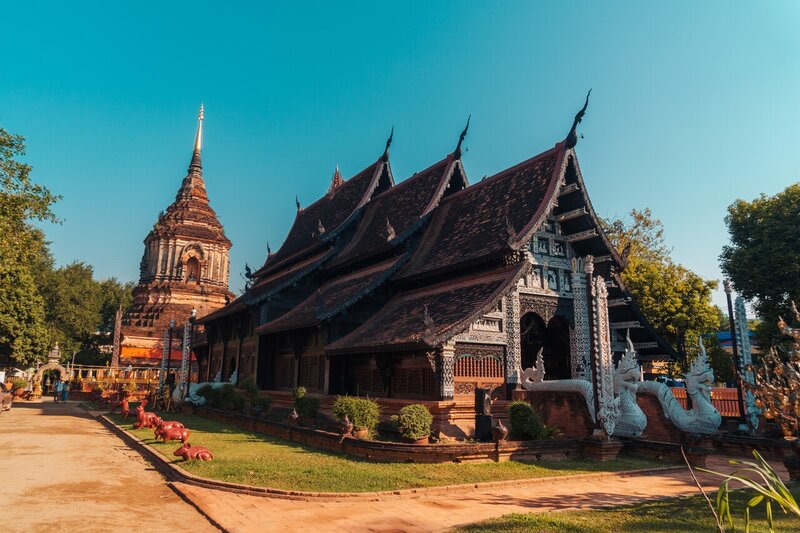
Our journey begins with Chiang Mai, arguably the most famous province in Northern Thailand. Once the thriving capital of the ancient Lanna Kingdom, it ruled this region 700 years ago.
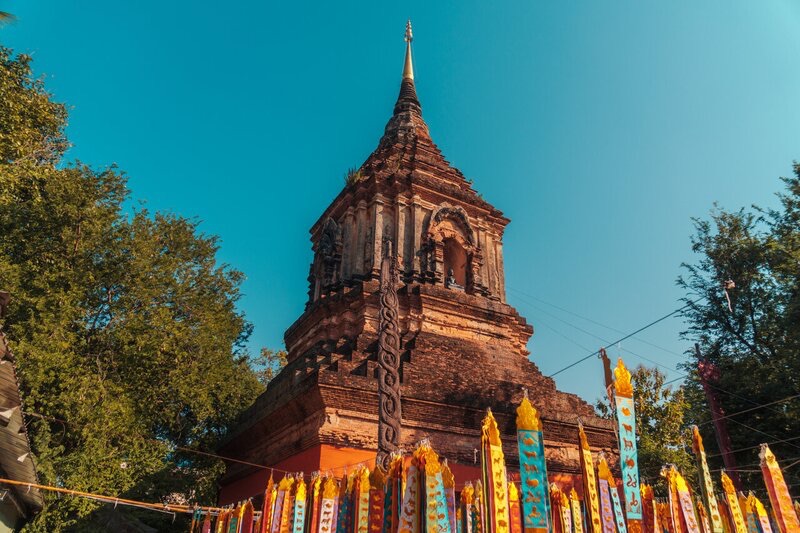
Chiang Mai is a top destination in Thailand for those seeking a city steeped in historical significance, providing a relaxed atmosphere and surrounded by mountains and natural beauty.
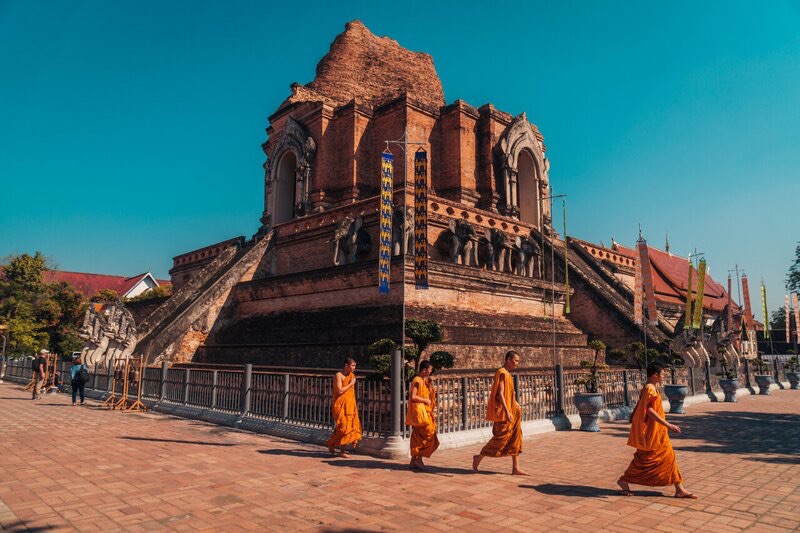
Encircled by the ancient Lanna walls, Chiang Mai’s old city is home to numerous stunning historical structures, some over 700 years old. Rent a bicycle and explore the city at your own pace, visiting sites such as Wat Lok Moli, Wat Chiang Man, Wat Phra Singh, or the magnificent Wat Doi Suthep, located atop the towering Doi Suthep Mountain.
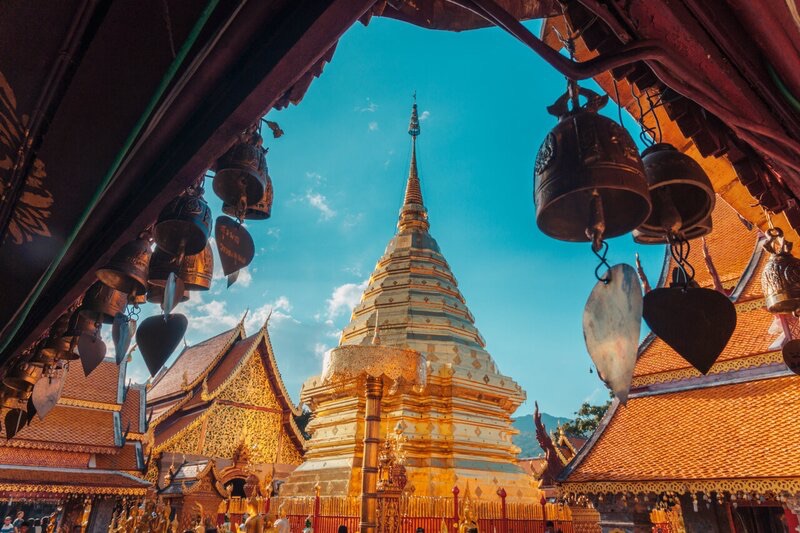
Chiang Mai is renowned for its exceptional night markets and pedestrian zones. Every Sunday, the main street of the old city transforms into a lively walking street, providing a fantastic opportunity to discover bargains on a diverse range of goods and souvenirs.
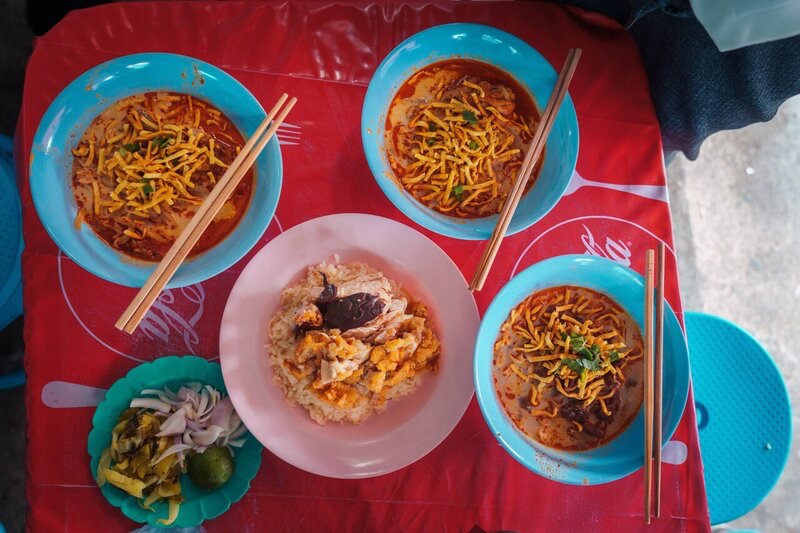
Certainly, one shouldn’t miss the delicious Khao Soi, a unique noodle specialty that is a signature dish of this region, and Sai Au, the spicy sausages of Chiang Mai, both of which are culinary staples in Northern Thailand.
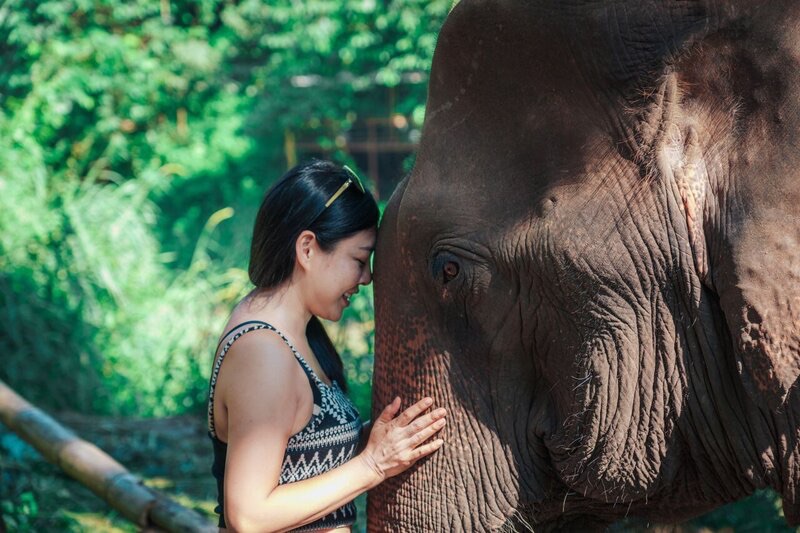
In summary, Chiang Mai should be a top priority on your Thailand itinerary. Its unique combination of tradition, culture, and affordability makes it an unparalleled destination.
